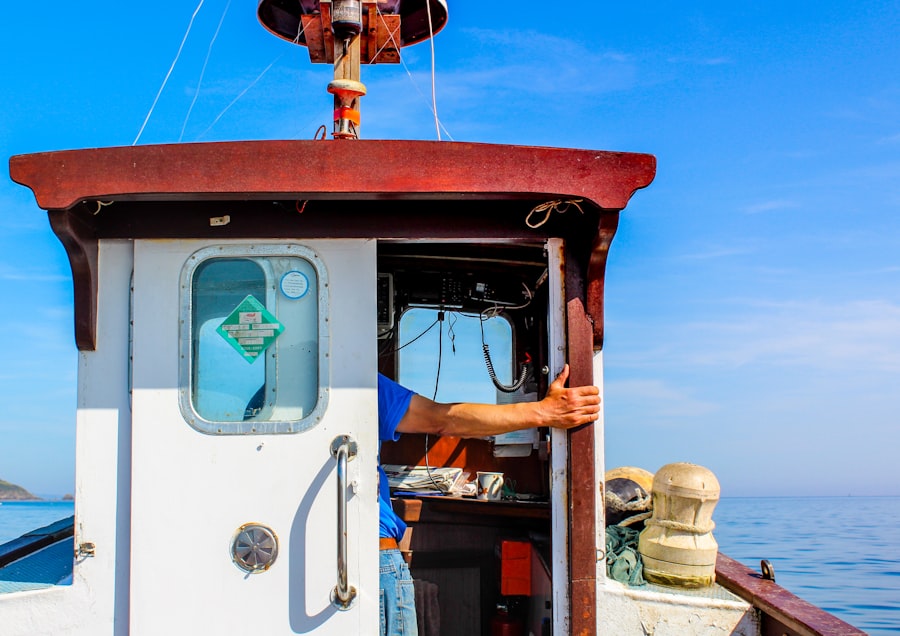Download links
How to install Exploring the Fascinating World of Fish APK?
1. Tap the downloaded Exploring the Fascinating World of Fish APK file.
2. Touch install.
3. Follow the steps on the screen.
Description
The world’s oceans, rivers, and lakes are home to an astonishing variety of fish species, each uniquely adapted to their environments. Scientists estimate that there are over 34,000 recognized species of fish, making them the most diverse group of vertebrates on the planet. This diversity is not merely a reflection of the number of species but also encompasses a wide range of shapes, sizes, colors, and behaviors.
From the tiny, vibrant neon tetra that measures just a few centimeters in length to the massive whale shark, which can grow up to 12 meters long, fish exhibit an incredible array of physical characteristics that allow them to thrive in various habitats. The classification of fish is generally divided into three main groups: jawless fish (like lampreys and hagfish), cartilaginous fish (such as sharks and rays), and bony fish, which make up the largest group. Bony fish alone account for approximately 95% of all fish species.
Within these categories, there are further subdivisions based on ecological niches and evolutionary adaptations. For instance, the diversity among bony fish includes both freshwater species like the pike and saltwater species like the clownfish.
Key Takeaways
- There are over 30,000 different species of fish, each with unique characteristics and adaptations.
- Fish have a wide range of adaptations, including bioluminescence, camouflage, and electrical sensitivity, that help them survive in their environments.
- Fish play a crucial role in maintaining the balance of ecosystems by controlling populations of other species and cycling nutrients.
- Fish exhibit a variety of fascinating behaviors, such as schooling, migration, and complex mating rituals.
- Human interaction with fish, including fishing and aquaculture, has both positive and negative impacts on fish populations and ecosystems.
- Conservation efforts, such as sustainable fishing practices and habitat protection, are essential for preserving fish populations and maintaining healthy ecosystems.
The Unique Adaptations of Fish
Fish have evolved a myriad of adaptations that allow them to survive in diverse aquatic environments. One of the most notable adaptations is their streamlined body shape, which reduces drag as they swim through water. This hydrodynamic design is complemented by specialized fins that provide stability and maneuverability.
For example, the pectoral fins of a flying fish allow it to glide above the water’s surface, escaping predators while also enabling it to cover significant distances in search of food or new habitats. Another fascinating adaptation is the presence of gills, which enable fish to extract oxygen from water. Unlike terrestrial animals that breathe air through lungs, fish have developed gills that are highly efficient at extracting dissolved oxygen from water as it flows over them.
Some species, like the lungfish, have even developed the ability to breathe air when water levels are low, showcasing an extraordinary evolutionary response to environmental changes. Additionally, many fish possess specialized sensory organs, such as the lateral line system, which detects vibrations and movements in the water, allowing them to navigate their surroundings and locate prey or avoid predators effectively.
The Importance of Fish in Ecosystems

Fish play a crucial role in maintaining the health and balance of aquatic ecosystems. As both predators and prey, they occupy various trophic levels within food webs, contributing to energy transfer and nutrient cycling. For instance, herbivorous fish like parrotfish graze on algae that can otherwise overgrow coral reefs, helping to maintain the delicate balance necessary for coral health.
In turn, carnivorous fish such as groupers help control populations of smaller fish, preventing any one species from dominating the ecosystem. Moreover, fish contribute to nutrient cycling through their waste products. When fish excrete waste into the water, they release nitrogen and phosphorus, which are essential nutrients for aquatic plants and phytoplankton.
This process supports primary production in aquatic environments, forming the foundation for food webs. Additionally, many fish species serve as indicators of environmental health; changes in their populations can signal shifts in ecosystem dynamics or the impacts of pollution and climate change. Thus, understanding the role of fish in ecosystems is vital for conservation efforts and sustainable management practices.
The word “conservation” in the last sentence can be linked to a relevant high authority source such as the National Oceanic and Atmospheric Administration (NOAA) website. Here is the link: conservation
The Fascinating Behaviors of Fish
| Behavior | Description |
|---|---|
| Schooling | Fish often swim in groups called schools for protection and to find food more easily. |
| Mating rituals | Many fish species have elaborate mating rituals, including colorful displays and dances. |
| Camouflage | Some fish can change their color or pattern to blend in with their surroundings for protection. |
| Migration | Some fish species migrate long distances for breeding or finding food. |
| Aggressive behavior | Some fish species display aggressive behavior to establish dominance or defend their territory. |
Fish exhibit a wide range of behaviors that are both intriguing and complex. Social structures among certain species can be quite elaborate; for example, schools of fish often swim together in synchronized patterns to confuse predators and enhance their chances of survival. This schooling behavior is not only a defensive mechanism but also plays a role in foraging efficiency, as fish can more easily locate food when they are in groups.
Reproductive behaviors among fish are equally fascinating and diverse. Many species engage in elaborate courtship rituals to attract mates. The male seahorse is particularly notable for its unique reproductive role; it carries fertilized eggs in a pouch until they hatch, providing protection and nourishment during development.
Other species exhibit parental care behaviors, such as mouthbrooding cichlids that carry their young in their mouths for protection until they are ready to fend for themselves. These behaviors highlight the complexity of fish life cycles and their adaptations to ensure reproductive success.
Human Interaction with Fish
Human interaction with fish has been profound and multifaceted throughout history. Fishing has been a vital source of food for countless cultures around the world for millennia. From artisanal fishing practices that sustain local communities to large-scale commercial fishing operations that supply global markets, humans have relied on fish as a primary protein source.
However, this reliance has led to significant challenges regarding overfishing and unsustainable practices that threaten fish populations and marine ecosystems. Aquaculture has emerged as a response to these challenges, providing an alternative means of producing fish while alleviating pressure on wild stocks. Fish farming has grown exponentially over recent decades, with species such as salmon and tilapia being cultivated in controlled environments.
While aquaculture can help meet global demand for seafood, it also raises concerns about environmental impacts, such as habitat destruction and pollution from farmed operations. Balancing human needs with sustainable practices is crucial for ensuring the long-term viability of both fish populations and the ecosystems they inhabit.
Conservation Efforts for Fish Populations

As awareness of the threats facing fish populations has grown, so too have conservation efforts aimed at protecting these vital species and their habitats. Overfishing remains one of the most pressing issues; international agreements such as the United Nations’ Sustainable Development Goal 14 aim to conserve and sustainably use the oceans, seas, and marine resources. Many countries have implemented regulations on fishing quotas and seasonal closures to allow fish populations to recover.
In addition to regulatory measures, habitat restoration initiatives play a critical role in conservation efforts. Coral reef restoration projects aim to rehabilitate damaged ecosystems that support diverse fish populations. Similarly, efforts to restore wetlands and river systems can enhance spawning habitats for freshwater species.
Community-based conservation programs also empower local populations to engage in sustainable fishing practices while promoting awareness about the importance of preserving aquatic ecosystems. The integration of science and traditional ecological knowledge is essential for effective conservation strategies. Collaborative efforts between researchers, policymakers, and local communities can lead to more effective management practices that consider both ecological health and human livelihoods.
As we continue to learn more about the complexities of fish biology and their roles within ecosystems, it becomes increasingly clear that protecting these remarkable creatures is vital not only for biodiversity but also for the health of our planet as a whole.
If you’re a fan of fishing games, you may also enjoy reading about the popular mobile game Hill Climb Racing 2. This game involves navigating various terrains with different vehicles, providing a fun and challenging experience for players. Check out the article here to learn more about this exciting game.
FAQs
What are fish?
Fish are aquatic vertebrates that are typically characterized by their gills, fins, and scales. They are cold-blooded animals that live in water and breathe through their gills.
What do fish eat?
The diet of fish can vary greatly depending on the species. Some fish are carnivorous and feed on other fish, while others are herbivorous and primarily eat algae and plants. Some fish are omnivorous and eat a combination of both animal and plant matter.
How do fish reproduce?
Most fish reproduce by laying eggs, which are fertilized externally by the male. However, some species of fish give birth to live young. After hatching, fish larvae go through various stages of development before reaching adulthood.
What are the different types of fish?
There are thousands of species of fish, ranging from tiny minnows to massive whale sharks. Fish can be categorized into groups such as bony fish (teleosts), cartilaginous fish (sharks and rays), and jawless fish (lampreys and hagfish).
Where do fish live?
Fish can be found in a wide variety of aquatic environments, including freshwater rivers and lakes, saltwater oceans, and brackish estuaries. Some fish species are also able to survive in extreme environments such as deep sea trenches and hot springs.
How do fish breathe?
Fish breathe by extracting oxygen from the water through their gills. As water passes over the gills, oxygen is absorbed into the fish’s bloodstream and carbon dioxide is released back into the water. This process allows fish to extract the oxygen they need to survive.





